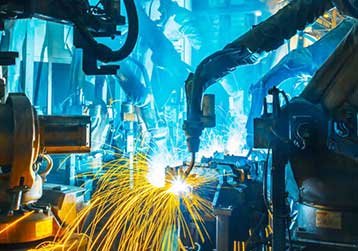Metal products are covered by this so-called mild steel. This is considered one of the best and most common metals worldwide, and it presents close to 1.3 billion tons of steel a year. There are several subcategories of steel, and that depends on different qualities along with characteristics.

To put it simply, steel is a term that covers a massive variety of different metals products and can be separated into two products, namely mild steel and stainless steel. With the various steel out there, some characteristics separate the two. The type of steel may vary, especially in its hardness, strength, cost, and aesthetics. One such category are mild steels, a term common for describing a very general type of steel. What exactly are mild steels, how is it made, and what is it used for? Let’s take a look.
What’s their difference?
Stainless Steels
Stainless steel is also known as a steel alloy that has a minimum chromium content of 11.5 percent. Unlike the other type of steels, this stainless one is known for not rusting as quickly. What prevents it from staining is the chromium content. In other words, the higher the Cr is, the more resistant it is.
Mild Steel
The other term for mild steels are carbon steel or plain carbon steel. ISIA often describe this type of steel as having close to 2% carob and no other alloying element. Remarkably, this is one of the most common steel forms used by many transportation and construction industries. Unlike stainless steel, these mild steels needs to be galvanized to prevent corrosion. The mild steel melting point is around 1350oC-1530oC (2462oF-2786oF), which depends on the amount of carbon it contains.
Some Facts About Mild Steels
- It is a ferrous metal made from iron and carbon.
- The carbon content ranges between 0.16% and 0.29 % maximum with a relatively high melting point between 1450°C to 1520°C.
- A thorough hardening is not possible for mild steel.
- Mild steels and galvanized products are recyclable.
- It does not have a high resistance to corrosion if it’s in untreated form.
- There are treatments available to enhance the appearance of mild steel and to protect it from corrosion.
- Mild steels can be cleaned by pickling.
- It is graded according to how it is produced and its chemical composition.
- Surface rust can be removed by mechanical grinding.
- Mild steels are more ductile when heated.
- Mild steels that has low-carbon has good magnetic properties and is being defines as ferromagnetic.
How is Mild Steel Made?
Are you wondering how mild steels are made? Mild steels are made similarly to other carbon steels. This standard method, which is the combination of iron and coal, melted together in a blast furnace, then solidified into a rectangular shape. Hot rolling or cold drawing will then bring these hard steels down to the desired size.
Typical Applications of Mild Steel
Here are the following areas where mild steels are being used.
- Structural steel
- Signs
- Automobiles
- Furniture
- Decorations
- Wire
- Fencing
- Nails
- Storage containers
At Net-ailing Huameilong Metal Products, we supply a wide range of metals products for a variety of applications. We are a smart storage solution provider and have been providing quality customer service and products since 1993. Contact us today to get started!

